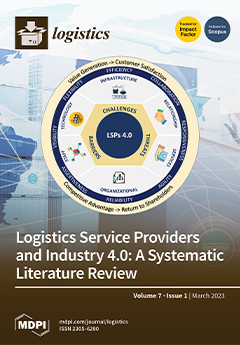Background: Possible solutions to overcome the many challenges of home delivery are collection and delivery points (CDPs). In addition to commercial facilities, the role of CDPs can also be played by users’ households, providing a crowd storage service. Key decisions regarding CDPs
[...] Read more.
Background: Possible solutions to overcome the many challenges of home delivery are collection and delivery points (CDPs). In addition to commercial facilities, the role of CDPs can also be played by users’ households, providing a crowd storage service. Key decisions regarding CDPs relate to their location, as well as the allocation of users to selected locations, so that the distance of users from CDPs is minimal.
Methods: In this paper, the described problem is defined as a
p-median problem and solved for the area of the city of Belgrade, using the heuristic “greedy” and the simulated annealing algorithm.
Results: Fifty locations of CDPs were selected and the users allocated to them were distributed in over 950 zones. The individual distances between users and the nearest CDPs and the sum of these distances, multiplied by the number of requests, were obtained. An example of modification of the number of CDPs is presented as a way of obtaining solutions that correspond to different preferences of operators and/or users in terms of their distances from the CDPs.
Conclusions: User households can be used as CDPs to achieve various benefits. Locating CDPs, i.e., selecting households, can be solved as a
p-median problem, using a combination of heuristic and metaheuristic algorithms. In addition, by modifying the number of medians, the total and average distances between users and CDPs can be better managed. The main contributions of the paper are the establishment of users’ households as potential locations of CDPs, the establishment of a framework for analysis of impact of the number of CDPs on the sum and average distances from the customers, as well as the creation of a basis for upgrading and modifying the model for implementation in the business practice.
Full article





